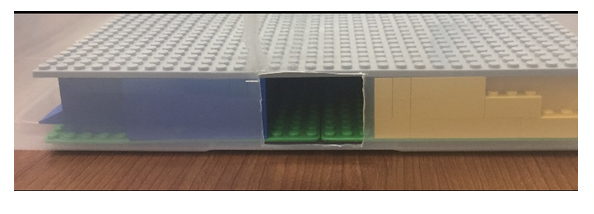Instructions for making a low cost, low fidelity box trainer
Materials needed:
- 40 quart clear plastic storage container
- Toy building bricks (Legos®or Brickyard®), including flat pieces for base and “roof”
- Utility knife
- Foam padding for storage
- Flexible ureteroscope
Build the box trainer in any desired configuration. We inserted special pieces in the different chambers and residents would practice maneuvering the ureteroscope and identifying the pieces.
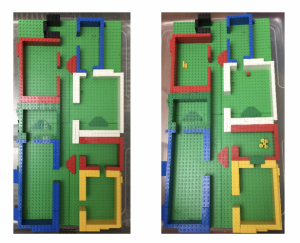
Place the configuration in the plastic storage container. It is very helpful to have a “roof” on the chambers to prevent the ureteroscope from going above the walls of the chambers. We used flat pieces with dual sided connectivity.
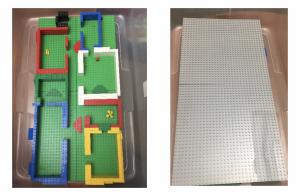
Cut a hole in one end of the plastic storage box for insertion of the ureteroscope.
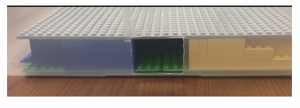
Use foam padding to protect the ureteroscope. Glue a piece to the inside top of the box as well as a piece to store the ureteroscope. Cut a groove with utility knife and highlight with a marker for ease of visibility.
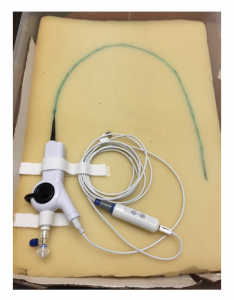
We wanted a dedicated reusable digital flexible ureteroscope for simulation education. While there are several disposable flexible ureteroscopes commercially available, most of those are designed to become inoperable after one use and may require a dedicated monitor purchased from the same company. This would be too costly for our program. Thus we identified a source for a disposable ureteroscope, NeoflexTM(Neoscope2020 LLC, San Jose, CA), that connects to a standard laptop or computer instead of a dedicated monitor. This scope does not become inoperable after a set period of time thus allowing reuse in a simulation setting
Urology Simulation
Education Program
PGY-1 Bootcamp
- Knot tying and Suturing
- Laparoscopic skills
- Bowel Anastomoses (PGY-3)
- Cystoscopy and Ureteroscopy
- Robotics
- Introduction to Loupe Surgery
- Introduction to Microsurgery PGY-2)
Surgical Skills Labs
- Ureteral Reimplant
- Advanced Endoscopy
- Artificial urinary sphincter
- Female Urology
- Hypospadias Repair
- Penile prosthesis
- Priapism Lab
Simulated Patient Scenarios
- GU history and exam
- Disease specific cases
- Transitions of care
- Delivering bad news
- Disclosure of medical errors
Simulation Resources
